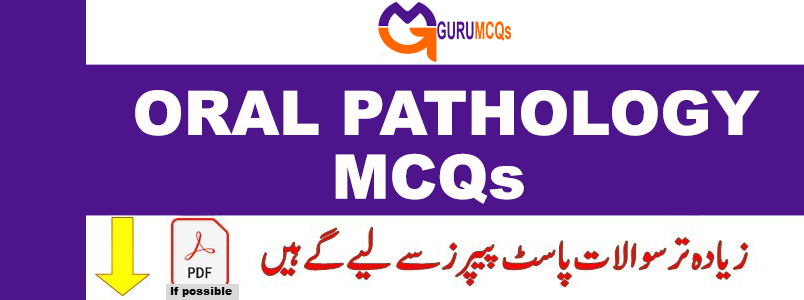
The mouth, being a vital organ with diverse functions, is subject to various diseases falling under the domain of oral pathology. This field encompasses the study of diseases affecting the mouth, jaws, and associated structures like salivary glands, facial muscles, temporomandibular joints, and perioral skin. Oral pathology, as a specialized discipline, focuses on diagnosing and investigating the causes and effects of diseases impacting the oral and maxillofacial region. For a thorough and objective assessment of students’ critical thinking abilities, multiple-choice questions (MCQs) serve as the preferred format. Gurumcqs.com offers a comprehensive collection of 2000+ oral pathology MCQs with answers and detailed explanations. These MCQs are carefully selected from reputable and trusted reference books on oral pathology. They prove beneficial for interview preparation, entrance examinations, competitive exams, and certifications, catering to individuals with varying levels of experience, including both seasoned professionals and newcomers. Additionally, you can explore MCQs on Oral Anatomy on this platform.
131. Which of the following represents soluble polysaccharide found in dental plaque and is formed from the fructose moiety of sucrose?
A. Levan
B. Dextran
C. Amlyopecting
D. Hyaluronic acid
132. Progression of dental caries caries on pit and fissure occurs from:
A. Apex of the pit and fissure
B. Wide and of the pit and fissure
C. Lateral surface of the pit and fissure
D. Bottom of the pit and fissure
133. Which of the following is cariostatic?
A. Selenium
B. Magnesium
C. Cadmium
D. Molybdenum
134. Liquefaction foci of Miller is a histopathological observation in:
A. Cemental caries
B. Early enamel caries
C. Advanced enamel caries
D. Advanced dentinal caries
135. Streptococcus mutans produces an adhesive polymer from sucrose, known as:__________?
A. Levans
B. Lectins
C. Glucans
D. Polyfructans
136. The gelatinous deposit adherent on the tooth surface is called as:__________?
A. Materia alba
B. Plaque
C. Calculus
D. All of the above
137. Most demineralised zone in enamel caries:____________?
A. Translucent zone
B. Body of lession
C. Dark zone
D. Surface zone
138. Most used selective medium for streptococcus mutans is:____________?
A. Mac conkey medium
B. Mitus salivarius bacitracin agar
C. Nutrient agar
D. Tellurite medium
139. The cells most frequently found in a granuloma are:___________?
A. Mast cells
B. Giant cells
C. Lymphocytes
D. Neutrophilis
140. Tiny linear or arc-shaped bodied, amorphous, brittle and eosinophilic in reaction found in association with some odontogenic cysts, are called:___________?
A. Civattle bodies
B. Russell bodies
C. Guarneri bodies
D. rushton bodies

Pingback: Oral Histology MCQs Questions for Test and Exam Preparation | GURU MCQS
I was recommended this website by my cousin. I’m not sure whether this post is written by him as nobody else
know suc detailed about my difficulty. You are wonderful!
Thanks! https://www.waste-ndc.pro/community/profile/tressa79906983/
I was recommended tthis webnsite by my cousin. I’m not suure whether this post is written by
him as nobody else know such detailed about myy difficulty.
You are wonderful! Thanks! https://www.waste-ndc.pro/community/profile/tressa79906983/